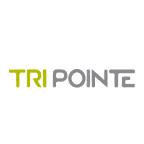IBP

Installed Building Products, Inc.
IBP
(3.2)177,27 USD
18.64% ROA
37.01% ROE
26.75x PER
6.806.773.260,00 USD
132.67% DER
1.24% Yield
8.74% NPM
Installed Building Products, Inc. Stock Analysis
Installed Building Products, Inc. Fundamental Analysis
Fundamental analysis in stock investing is like studying the foundation of a house before buying it. It involves looking at a company's financial health, like its earnings, assets, and debts, to determine if it's a good investment based on its fundamental strength and potential for growth.
| # | Analysis | Rating |
|---|---|---|
| 1 |
ROE
The stock's ROE exceeds expectations (47.71%), revealing strong profitability and efficient use of shareholders' equity, making it an attractive investment opportunity. |
|
| 2 |
ROA
This stock has a great ability to make a lot of money from the things it owns, which makes it a really good investment for smart investors. |
|
| 3 |
Revenue Growth
This company's revenue has experienced steady growth over the last five years, indicating a reliable and prosperous financial trajectory. |
|
| 4 |
Net Profit Growth
With a track record of consistent net profit growth over the past five years, this company presents a compelling investment opportunity due to its strong financial performance. |
|
| 5 |
Assets Growth
With a track record of consistent revenue growth in the past five years, this company presents a compelling opportunity. |
|
| 6 |
Dividend Growth
Investors can take confidence in the company's impressive track record of annual dividend growth over the last three years, showcasing a commitment to providing higher returns. |
|
| 7 |
Dividend
Investors can rely on the company's consistent dividend payments over the past three years, offering a steady stream of returns. |
|
| 8 |
Buffet Intrinsic Value
The company's stock shows potential as it is undervalued (2.385) according to Warren Buffett's formula, indicating that its intrinsic value exceeds the market price. |
|
| 9 |
PBV
The stock's elevated P/BV ratio (7.18x) raises concerns about its overvaluation, making it an imprudent choice for investors seeking value. |
|
| 10 |
DER
The stock is burdened with a heavy load of debt (169%), making it financially unstable and potentially risky for investors. |
|
| 11 |
Graham Number
Based on the Graham number, this company's stock price appears to be higher than its intrinsic value, signaling a potentially unfavorable investment choice. |
Installed Building Products, Inc. Technical Analysis
Technical analysis in stock investing is like reading the patterns on a weather map to predict future weather conditions. It involves studying past stock price movements and trading volumes to make predictions about where a stock's price might go next, without necessarily looking at the company's financial health.
| # | Analysis | Recommendation |
|---|---|---|
| 1 | Awesome Oscillator | Buy |
| 2 | MACD | Buy |
| 3 | RSI | Hold |
| 4 | Stoch RSI | Sell |
Installed Building Products, Inc. Price Chart
Financial Statements
Financial statements are like report cards for companies. They show how much money a company makes (income statement), what it owns and owes (balance sheet), and where it spends its money (cash flow statement), helping stock investors understand if a company is healthy and worth investing in.
Income Statements
An income statement for a company is like a scoreboard for its profits and losses. It shows how much money the company made (revenue) and how much it spent to make that money (expenses), helping stock investors see if a company is making a profit or not.
Revenue in stock investing is the total amount of money a company earns from its sales, and it's a key factor that investors consider to assess a company's financial performance and growth potential.
| Year | Revenue | Growth |
|---|---|---|
| 2011 | 238.447.000 | |
| 2012 | 301.253.000 | 20.85% |
| 2013 | 431.929.000 | 30.25% |
| 2014 | 518.020.000 | 16.62% |
| 2015 | 662.719.000 | 21.83% |
| 2016 | 862.980.000 | 23.21% |
| 2017 | 1.132.927.000 | 23.83% |
| 2018 | 1.336.432.000 | 15.23% |
| 2019 | 1.511.629.000 | 11.59% |
| 2020 | 1.653.225.000 | 8.56% |
| 2021 | 1.968.650.000 | 16.02% |
| 2022 | 2.669.844.000 | 26.26% |
| 2023 | 2.825.860.000 | 5.52% |
| 2023 | 2.778.600.000 | -1.7% |
| 2024 | 2.950.400.000 | 5.82% |
Research and Development Expenses are the costs a company incurs to create and improve its products or services, which can be important for investors to evaluate a company's innovation and potential for future growth.
| Year | Research and Development Expenses | Growth |
|---|---|---|
| 2011 | 0 | |
| 2012 | 0 | 0% |
| 2013 | 0 | 0% |
| 2014 | 0 | 0% |
| 2015 | 0 | 0% |
| 2016 | 0 | 0% |
| 2017 | 0 | 0% |
| 2018 | 0 | 0% |
| 2019 | 0 | 0% |
| 2020 | 0 | 0% |
| 2021 | 0 | 0% |
| 2022 | 0 | 0% |
| 2023 | 0 | 0% |
| 2023 | 0 | 0% |
| 2024 | 0 | 0% |
General and Administrative Expenses are the costs a company incurs to run its day-to-day operations, such as office rent, salaries, and utilities, which investors consider to understand a company's overall efficiency and management effectiveness.
| Year | General and Administrative Expenses | Growth |
|---|---|---|
| 2011 | 50.438.000 | |
| 2012 | 60.633.000 | 16.81% |
| 2013 | 67.194.000 | 9.76% |
| 2014 | 80.678.000 | 16.71% |
| 2015 | 99.375.000 | 18.81% |
| 2016 | 125.472.000 | 20.8% |
| 2017 | 164.453.000 | 23.7% |
| 2018 | 185.850.000 | 11.51% |
| 2019 | 214.134.000 | 13.21% |
| 2020 | 237.959.000 | 10.01% |
| 2021 | 271.356.000 | 12.31% |
| 2022 | 335.688.000 | 19.16% |
| 2023 | 387.156.000 | 13.29% |
| 2023 | 385.300.000 | -0.48% |
| 2024 | 426.800.000 | 9.72% |
EBITDA stands for Earnings Before Interest, Taxes, Depreciation, and Amortization. It is a measure that helps stock investors analyze a company's profitability by looking at its earnings without considering certain expenses. This helps to get a clearer picture of the company's financial performance and its ability to generate cash flow.
| Year | EBITDA | Growth |
|---|---|---|
| 2011 | 9.644.000 | |
| 2012 | 5.959.000 | -61.84% |
| 2013 | 25.909.000 | 77% |
| 2014 | 40.597.000 | 36.18% |
| 2015 | 68.907.000 | 41.08% |
| 2016 | 100.617.000 | 31.52% |
| 2017 | 128.343.000 | 21.6% |
| 2018 | 151.407.000 | 15.23% |
| 2019 | 199.772.000 | 24.21% |
| 2020 | 249.464.000 | 19.92% |
| 2021 | 288.016.000 | 13.39% |
| 2022 | 458.758.000 | 37.22% |
| 2023 | 454.176.000 | -1.01% |
| 2023 | 495.800.000 | 8.4% |
| 2024 | 534.799.996 | 7.29% |
Gross profit is the money a company makes from selling its products or services after subtracting the cost of producing or providing them, and it is an important measure for investors to understand a company's profitability.
| Year | Gross Profit | Growth |
|---|---|---|
| 2011 | 57.226.000 | |
| 2012 | 74.043.000 | 22.71% |
| 2013 | 109.688.000 | 32.5% |
| 2014 | 140.052.000 | 21.68% |
| 2015 | 188.293.000 | 25.62% |
| 2016 | 252.448.000 | 25.41% |
| 2017 | 324.026.000 | 22.09% |
| 2018 | 371.591.000 | 12.8% |
| 2019 | 434.820.000 | 14.54% |
| 2020 | 509.974.000 | 14.74% |
| 2021 | 589.519.000 | 13.49% |
| 2022 | 827.784.000 | 28.78% |
| 2023 | 968.376.000 | 14.52% |
| 2023 | 930.700.000 | -4.05% |
| 2024 | 963.600.000 | 3.41% |
Net income in stock investing is like the money a company actually gets to keep as profit after paying all its bills, and it's an important measure to understand how well a company is doing financially.
| Year | Net Profit | Growth |
|---|---|---|
| 2011 | -8.985.000 | |
| 2012 | -1.906.000 | -371.41% |
| 2013 | 6.040.000 | 131.56% |
| 2014 | 13.932.000 | 56.65% |
| 2015 | 26.517.000 | 47.46% |
| 2016 | 38.436.000 | 31.01% |
| 2017 | 41.140.000 | 6.57% |
| 2018 | 54.748.000 | 24.86% |
| 2019 | 68.159.000 | 19.68% |
| 2020 | 97.239.000 | 29.91% |
| 2021 | 118.800.000 | 18.15% |
| 2022 | 223.400.000 | 46.82% |
| 2023 | 271.968.000 | 17.86% |
| 2023 | 243.700.000 | -11.6% |
| 2024 | 260.800.000 | 6.56% |
EPS, or earnings per share, is a measure that shows how much profit a company has earned for each outstanding share of its stock, and it is important for stock investors as it helps understand the profitability of a company and compare it with other companies in the market.
| Year | Earning per Share (EPS) | Growth |
|---|---|---|
| 2011 | 0 | |
| 2012 | 0 | 0% |
| 2013 | 0 | 0% |
| 2014 | 0 | 0% |
| 2015 | 1 | 0% |
| 2016 | 1 | 100% |
| 2017 | 1 | 0% |
| 2018 | 2 | 0% |
| 2019 | 2 | 50% |
| 2020 | 3 | 33.33% |
| 2021 | 4 | 25% |
| 2022 | 8 | 42.86% |
| 2023 | 10 | 22.22% |
| 2023 | 9 | -12.5% |
| 2024 | 9 | 11.11% |
Cashflow Statements
Cashflow statements show the movement of money in and out of a company, helping stock investors understand how much money a company makes and spends. By examining cashflow statements, investors can assess if a company is generating enough cash to pay its bills, invest in growth, and provide returns to stockholders.
Free cash flow is the leftover cash that a company generates after covering its operating expenses and capital expenditures, which is important for stock investors as it shows how much money a company has available to invest in growth, pay dividends, or reduce debt.
| Year | Free Cashflow | Growth |
|---|---|---|
| 2011 | -13.817.000 | |
| 2012 | 1.665.000 | 929.85% |
| 2013 | 1.559.000 | -6.8% |
| 2014 | 13.426.000 | 88.39% |
| 2015 | 7.242.000 | -85.39% |
| 2016 | 46.253.000 | 84.34% |
| 2017 | 37.104.000 | -24.66% |
| 2018 | 61.401.000 | 39.57% |
| 2019 | 72.900.000 | 15.77% |
| 2020 | 147.202.000 | 50.48% |
| 2021 | 101.335.000 | -45.26% |
| 2022 | 232.258.000 | 56.37% |
| 2023 | 93.874.000 | -147.41% |
| 2023 | 278.600.000 | 66.31% |
| 2024 | 58.200.000 | -378.69% |
Operating cash flow represents the cash generated or consumed by a company's day-to-day operations, excluding external investing or financing activities, and is crucial for stock investors as it shows how much cash a company is generating from its core business operations.
| Year | Operating Cashflow | Growth |
|---|---|---|
| 2011 | -12.755.000 | |
| 2012 | 4.594.000 | 377.64% |
| 2013 | 4.224.000 | -8.76% |
| 2014 | 19.602.000 | 78.45% |
| 2015 | 34.547.000 | 43.26% |
| 2016 | 73.266.000 | 52.85% |
| 2017 | 68.772.000 | -6.53% |
| 2018 | 96.633.000 | 28.83% |
| 2019 | 123.067.000 | 21.48% |
| 2020 | 180.789.000 | 31.93% |
| 2021 | 138.314.000 | -30.71% |
| 2022 | 277.904.000 | 50.23% |
| 2023 | 112.446.000 | -147.14% |
| 2023 | 340.200.000 | 66.95% |
| 2024 | 79.000.000 | -330.63% |
Capex, short for capital expenditures, refers to the money a company spends on acquiring or upgrading tangible assets like buildings, equipment, or technology, which is important for stock investors as it indicates how much a company is investing in its infrastructure to support future growth and profitability.
| Year | Capital Expenditure | Growth |
|---|---|---|
| 2011 | 1.062.000 | |
| 2012 | 2.929.000 | 63.74% |
| 2013 | 2.665.000 | -9.91% |
| 2014 | 6.176.000 | 56.85% |
| 2015 | 27.305.000 | 77.38% |
| 2016 | 27.013.000 | -1.08% |
| 2017 | 31.668.000 | 14.7% |
| 2018 | 35.232.000 | 10.12% |
| 2019 | 50.167.000 | 29.77% |
| 2020 | 33.587.000 | -49.36% |
| 2021 | 36.979.000 | 9.17% |
| 2022 | 45.646.000 | 18.99% |
| 2023 | 18.572.000 | -145.78% |
| 2023 | 61.600.000 | 69.85% |
| 2024 | 20.800.000 | -196.15% |
Balance Sheet
Balance sheets provide a snapshot of a company's financial health and its assets (such as cash, inventory, and property) and liabilities (like debts and obligations) at a specific point in time. For stock investors, balance sheets help assess the company's overall worth and evaluate its ability to meet financial obligations and support future growth.
Equity refers to the ownership interest or stake that shareholders have in a company, representing their claim on its assets and earnings after all debts and liabilities are paid.
| Year | Equity | Growth |
|---|---|---|
| 2011 | 5.941.000 | |
| 2012 | 9.764.000 | 39.15% |
| 2013 | 9.581.000 | -1.91% |
| 2014 | 91.874.000 | 89.57% |
| 2015 | 114.483.000 | 19.75% |
| 2016 | 153.977.000 | 25.65% |
| 2017 | 210.528.000 | 26.86% |
| 2018 | 182.498.000 | -15.36% |
| 2019 | 250.031.000 | 27.01% |
| 2020 | 319.182.000 | 21.67% |
| 2021 | 416.840.000 | 23.43% |
| 2022 | 493.499.000 | 15.53% |
| 2023 | 670.300.000 | 26.38% |
| 2023 | 628.182.000 | -6.7% |
| 2024 | 685.300.000 | 8.33% |
Assets represent the valuable resources that a company owns, such as cash, inventory, property, and equipment, and understanding a company's assets helps investors assess its value and potential for generating future profits.
| Year | Assets | Growth |
|---|---|---|
| 2011 | 127.526.000 | |
| 2012 | 160.752.000 | 20.67% |
| 2013 | 191.070.000 | 15.87% |
| 2014 | 234.162.000 | 18.4% |
| 2015 | 374.082.000 | 37.4% |
| 2016 | 462.095.000 | 19.05% |
| 2017 | 738.746.000 | 37.45% |
| 2018 | 834.658.000 | 11.49% |
| 2019 | 1.099.479.000 | 24.09% |
| 2020 | 1.187.676.000 | 7.43% |
| 2021 | 1.653.202.000 | 28.16% |
| 2022 | 1.778.932.000 | 7.07% |
| 2023 | 1.981.300.000 | 10.21% |
| 2023 | 1.920.960.000 | -3.14% |
| 2024 | 2.025.200.000 | 5.15% |
Liabilities refer to the financial obligations or debts that a company owes to creditors or external parties, and understanding a company's liabilities is important for investors as it helps assess the company's financial risk and ability to meet its obligations.
| Year | Liabilities | Growth |
|---|---|---|
| 2011 | 121.585.000 | |
| 2012 | 150.988.000 | 19.47% |
| 2013 | 181.489.000 | 16.81% |
| 2014 | 142.288.000 | -27.55% |
| 2015 | 259.599.000 | 45.19% |
| 2016 | 308.118.000 | 15.75% |
| 2017 | 528.218.000 | 41.67% |
| 2018 | 652.160.000 | 19% |
| 2019 | 849.448.000 | 23.23% |
| 2020 | 868.494.000 | 2.19% |
| 2021 | 1.236.362.000 | 29.75% |
| 2022 | 1.285.433.000 | 3.82% |
| 2023 | 1.311.000.000 | 1.95% |
| 2023 | 1.292.778.000 | -1.41% |
| 2024 | 1.339.900.000 | 3.52% |
Installed Building Products, Inc. Financial Ratio (TTM)
Valuation Metrics
- Revenue per Share
- 101.43
- Net Income per Share
- 9.01
- Price to Earning Ratio
- 26.75x
- Price To Sales Ratio
- 2.38x
- POCF Ratio
- 18.56
- PFCF Ratio
- 23.47
- Price to Book Ratio
- 9.91
- EV to Sales
- 2.59
- EV Over EBITDA
- 14.87
- EV to Operating CashFlow
- 20.22
- EV to FreeCashFlow
- 25.51
- Earnings Yield
- 0.04
- FreeCashFlow Yield
- 0.04
- Market Cap
- 6,81 Bil.
- Enterprise Value
- 7,40 Bil.
- Graham Number
- 70.23
- Graham NetNet
- -18.33
Income Statement Metrics
- Net Income per Share
- 9.01
- Income Quality
- 1.44
- ROE
- 0.38
- Return On Assets
- 0.12
- Return On Capital Employed
- 0.23
- Net Income per EBT
- 0.73
- EBT Per Ebit
- 0.89
- Ebit per Revenue
- 0.13
- Effective Tax Rate
- 0.27
Margins
- Sales, General, & Administrative to Revenue
- 0.14
- Research & Developement to Revenue
- 0
- Stock Based Compensation to Revenue
- 0.01
- Gross Profit Margin
- 0.33
- Operating Profit Margin
- 0.13
- Pretax Profit Margin
- 0.12
- Net Profit Margin
- 0.09
Dividends
- Dividend Yield
- 0.01
- Dividend Yield %
- 1.24
- Payout Ratio
- 0.33
- Dividend Per Share
- 2.98
Operating Metrics
- Operating Cashflow per Share
- 12.99
- Free CashFlow per Share
- 10.29
- Capex to Operating CashFlow
- 0.21
- Capex to Revenue
- 0.03
- Capex to Depreciation
- 0.59
- Return on Invested Capital
- 0.18
- Return on Tangible Assets
- 0.19
- Days Sales Outstanding
- 60.52
- Days Payables Outstanding
- 30
- Days of Inventory on Hand
- 33.45
- Receivables Turnover
- 6.03
- Payables Turnover
- 12.16
- Inventory Turnover
- 10.91
- Capex per Share
- 2.69
Balance Sheet
- Cash per Share
- 13,50
- Book Value per Share
- 24,32
- Tangible Book Value per Share
- 0.8
- Shareholders Equity per Share
- 24.32
- Interest Debt per Share
- 33.6
- Debt to Equity
- 1.33
- Debt to Assets
- 0.45
- Net Debt to EBITDA
- 1.19
- Current Ratio
- 3.08
- Tangible Asset Value
- 0,02 Bil.
- Net Current Asset Value
- -0,25 Bil.
- Invested Capital
- 1638400000
- Working Capital
- 0,73 Bil.
- Intangibles to Total Assets
- 0.33
- Average Receivables
- 0,47 Bil.
- Average Payables
- 0,16 Bil.
- Average Inventory
- 173350000
- Debt to Market Cap
- 0.13
Dividends
Dividends in stock investing are like rewards that companies give to their shareholders. They are a portion of the company's profits distributed to investors, typically in the form of cash payments, as a way for them to share in the company's success.
| Year | Dividends | Growth |
|---|---|---|
| 2021 | 1 | |
| 2022 | 2 | 50% |
| 2023 | 2 | 0% |
| 2024 | 3 | 0% |
Installed Building Products, Inc. Profile
About Installed Building Products, Inc.
Installed Building Products, Inc., together with its subsidiaries, engages in the installation of insulation, waterproofing, fire-stopping, fireproofing, garage doors, rain gutters, window blinds, shower doors, closet shelving and mirrors, and other products in the continental United States. The company offers a range of insulation materials, such as fiberglass and cellulose, and spray foam insulation materials. It is also involved in the installation of insulation and sealant materials in various areas of a structure, which includes basement and crawl space, building envelope, attic, and acoustical applications. In addition, the company installs a range of caulk and sealant products that control air infiltration in residential and commercial buildings; and waterproofing options, including sheet and hot applied waterproofing membranes, as well as deck coating, bentonite, and air and vapor systems. It serves homebuilders, multi-family and commercial construction firms, individual homeowners, and repair and remodeling contractors through a network of approximately 210 branch locations. The company was formerly known as CCIB Holdco, Inc. Installed Building Products, Inc. was founded in 1977 and is based in Columbus, Ohio.
- CEO
- Mr. Jeffrey W. Edwards
- Employee
- 10.600
- Address
-
495 South High Street
Columbus, 43215
Installed Building Products, Inc. Executives & BODs
| # | Name | Age |
|---|---|---|
| 1 |
Mr. Jeffrey W. Edwards Chairman, Chief Executive Officer & President |
70 |
| 2 |
Mr. Todd R. Fry CPA Chief Accounting Officer & Treasurer |
70 |
| 3 |
Mr. Vikas Verma President of Commercial Development |
70 |
| 4 |
Mr. Martin J. Luffy Chief Information Officer |
70 |
| 5 |
Mr. Jay P. Elliott Executive Vice President of Business Strategy and Development |
70 |
| 6 |
Mr. Brad A. Wheeler Regional President & Chief Operating Officer |
70 |
| 7 |
Mr. Michael Thomas Miller Chief Financial Officer, Executive Vice President of Finance & Director |
70 |
| 8 |
Mr. William Jeffrey Hire President of External Affairs |
70 |
| 9 |
Ms. Shelley A. McBride Esq. General Counsel & Secretary |
70 |
| 10 |
Mr. Jason R. Niswonger Chief Administrative & Sustainability Officer |
70 |









